This post is part of an ongoing series profiling the Network’s partners and their good work.
In 1992, with support from the Alaska Conservation Foundation, Nevette Bowen, a community organizer and fisherman, traveled coastal Alaska to listen to the marine conservation concerns of fishermen, subsistence harvesters and coastal residents. A consensus emerged from these coastal voices and with it, the creation of the Alaska Marine Conservation Council (AMCC). Nearly 25 years ago, AMCC was founded as a voice for long-term community-based marine conservation.
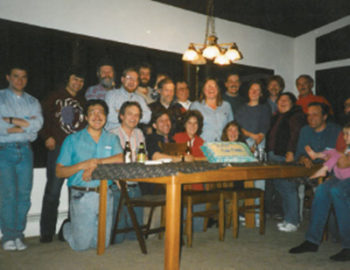
Top photo: Kodiak waterfront. Above: Alaska Marine Conservation Council Founding Board Members, via AMCC.
Since that time, AMCC has remained steadfast in its commitment to ensuring the role of local coastal residents in decision-making processes, and addressing growing threats to Alaska’s marine ecosystems including high levels of bycatch, destructive fishing practices and offshore drilling. AMCC’s work is guided by the core principle that people are part of, and depend on, a healthy and diverse marine ecosystems and are responsible for maintaining them.
As a commercial fisherman and long-time AMCC staff member based out of Kodiak, Alaska, my work is split between salmon setnetting in the summer and policy work for the remainder. My work for AMCC provides me the opportunity to give back to the marine environment which has provided so much to me and my family as we finish up our 37th fishing season here in Kodiak. My work aligns with my values around sustainable fisheries and local stewardship. AMCC supports an ecosystem-based approach to research and marine resource management that incorporates the best science available, experiential knowledge, and the wisdom of tradition.
For nearly 25 years, AMCC has actively engaged in the fisheries policy arena, spearheading and supporting numerous initiatives to provide local access, protect habitat, reduce bycatch and increase understanding of the marine environment.
Early on, AMCC worked with the Unalaska Native Fisherman’s Association at the North Pacific Fishery Management Council (the Council) to acquire a 2% allocation of the Bering Sea Pacific cod quota to provide community-based access and promote the use of low impact gear. More recently, Gulf of Alaska jig fishermen worked with AMCC through the Council process to establish a set-aside of rockfish and Pacific cod quota for small-boat jig fishermen. These access initiatives promote the use of a gear type associated with minimal bycatch and habitat disruption while providing much needed entry-level opportunity, which is critical to the sustained health of Alaskan fishing communities. Following the Gulf of Alaska jig set-aside, Kodiak fishermen worked with AMCC to develop the Kodiak Jig Seafoods brand. Our efforts aimed to increase the profitability of the artisanal jig fleet and support collaborative marketing. These efforts continue today and focus on connecting community-based fishermen with Alaskan seafood consumers.
Inspired by coastal community concerns throughout the State, AMCC has also worked diligently over the years to secure habitat protections. These include ‘freezing the footprint’ of the bottom trawl fishery in the Aleutian Islands and protecting expansive coral habitats. Through this measure, 60% of the fishable grounds were closed to bottom trawling, and the Aleutian Islands’ remarkable coral gardens were protected for generations to come. Our organization also supported the Board of Fish decision to close state waters around Kodiak Island to bottom trawling. To increase understanding of the distinctive habitat features that make up Alaska’s complex marine floor, AMCC and Alaska Sea Grant published, ‘Living Marine Habitats of Alaska,’ a publication showcasing the unique characteristics of Alaskan waters. Through photographs and text, the publication features some of the many living seafloor habitats found off the coast of Alaska and provides a glimpse into the deep diversity of the North Pacific and Bering Sea ecosystems.
To bring greater understanding of some of the remarkable features of different fish species, AMCC launched an educational effort on conservation and management of long-lived rockfish to stimulate discussion among fishermen, scientists and fishery managers. For example, a rockfish may not spawn until 25 years old, and as she gets older she produces more and more robust young. These fish live a long time, 100 to 200 years old in some species and continue to spawn into old age. They are slow growing, late maturing and long-lived and as such are very vulnerable to overfishing. Facilitating understanding of the complex nature of these species fosters an environment where information is shared among recreational anglers, commercial fishermen and scientists to support measures to protect rockfish from overfishing.
The grassroots advocacy work of AMCC works to ensure that fisheries management and other uses of the ocean prioritize the long-term health of marine ecosystems. In a sense, the community members who got together to establish the group were advocating for fisheries management which embraces ecosystem-based fishery management in advocating for policies that protect habitat, minimize waste, and prevent overfishing.
Ecosystem-based fishery management (EBFM) attempts to account for the fact that fish and fishermen are just two components in a large, interconnected marine system. Under an ecosystem approach, fishery managers look beyond the status of single species and incorporate other ecosystem considerations into decision-making processes, such as predator-prey relationships, habitat protections, changing ocean and climate conditions and the dependence of coastal communities; this is the vision of fishery management that coastal Alaskans have been encouraging for years.
Looking forward, the voices of coastal Alaskans with support of grassroots organizations such as AMCC will continue to help shape healthy marine ecosystems. At present, the North Pacific Fishery Management Council is developing a progressive Bering Sea Fishery Ecosystem Plan which will help guide decisions for policies and fishery management in the Bering Sea. The Fishery Ecosystem Plan will serve as a guiding document to benefit the decision-making process in numerous ways. These include the use of traditional and local knowledge as a component of ecosystem science and framework for the strategic planning necessary to prioritize fishery, habitat, and ecosystem research, modeling and survey needs. The North Pacific is a remarkable marine environment, and forward thinking management plans help to increase the likelihood that the waters of the North Pacific remain robust and resilient.
No fisheries discussion would be complete without tying it all back to the Magnuson-Stevens Fishery Conservation and Management Act, which was signed into law in 1976 and marked the beginning of federal fisheries management in the Exclusive Economic Zone from 3-200 miles. (Federal fisheries are managed by NOAA’s National Marine Fisheries Service (NMFS), an agency of the U.S. Department of Commerce and advised by eight regional fishery management councils.)
Since MSA was established, there have been several reauthorizations over the act’s 40-year history. AMCC has worked to bring fishermen and coastal residents to Washington D.C. to bring the voice of those that live adjacent the marine resources to decision-makers. MSA has been a critical tool in rebuilding America’s fisheries and supporting coastal fishing communities. The bill is currently up for reauthorization, and AMCC has been working with a network of fishing organizations around the nation with common goals: maintain strong science to guide decisions, strengthen at-sea and dockside monitoring and accountability, strengthen coastal community protections, reduce bycatch, incorporate ecosystem considerations and support the next generation of fishermen. It is encouraging to work with conservation-minded fishermen around the United States who seek to strengthen the MSA and are committed to the long-term health of the marine environment.
In Alaska, our relationship with the marine environment runs deep. In our next 25 years, AMCC will continue to work to ensure that this connection remains strong, embedded in sound science and lasting cultural traditions.
For more information about the Alaska Marine Conservation Council, please visit www.akmarine.org

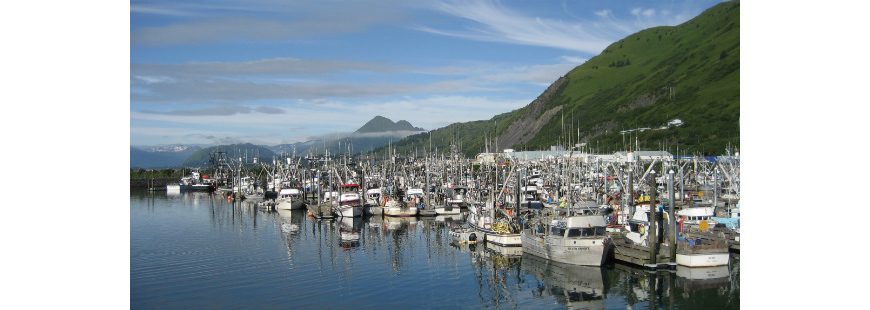
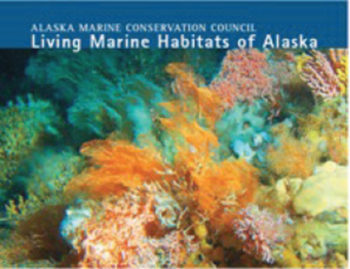
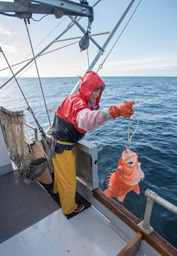
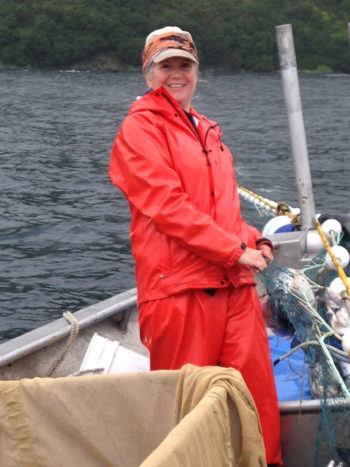

It’s really great to see how AMCC has grown and flourished over the years!
On a personal note I, and my family are very dissapointed that my participation, as a founding member, (and first presidenti), during establishiment of AMCC has been completely omitted from the history of its inception.
I had worked closely with Jim Stratton at ACF & Steve Conn at AkPIRG, as well as WWF, to elevate many aspects of marine conservation in Alaska.
It was Nevette who brilliantly coordinated interested parties to get together for the initial meetings. We met & founded AMCC during that period.
I continued pursuing the bycatch problem, producing in 1992, with assistance from ACF, “The last great buffalo hunt. The hidden scandal in Alaska’s fisheries”.
ACF funded my attendance & assisted me in gaining NGO status representing AMCC at the New York United Nations Conference on the Law of the Sea Conference on Highly Migratory & Straddling Fish Stocks in July 1993, …and again…
It was during that first trip that I met with Dave at the Rockerfeller Foundation to secure funding for the future of AMCC.
This meeting was followed up by taking their representative on a tour which included a cruise on Prince William Sound. The upshot of these meetings was the receipt of a Kellog Foundation grant which underpinned staffing at AMCC.
So, perhaps you all could set the record straight for posterity?
Warm regards,
Chris Chavasse
Hi Chris
You may not recall our meeting in Vancouver during the preliminary gathering prior to the UN Conference in NYC, but I brought you and Dr. John Lien of U of Nfld together and we drafted a recommendation that would go some distance to solving the problem which was that the nation producing the fish would have all the rights to harvesting them. I did not go to NYC but was gratified to hear several years later from a Russian colleague that our resolution had been adopted. Are you aware of that?
Hope all is well.
Cheers
Ehor Boyanowsky boyanows@sfu.ca
Former:
President of the SSBC
BOD of the Wild Salmon Center
President of CUFABC
President of the Canadian Constitutional Foundation
Fisheries Analysis Research Centre of SFU